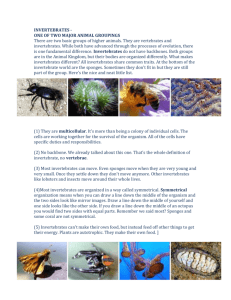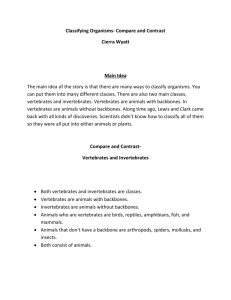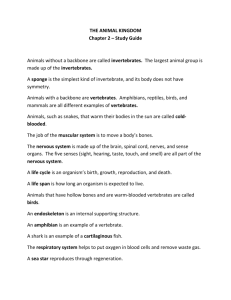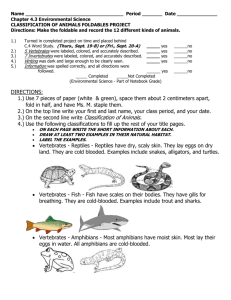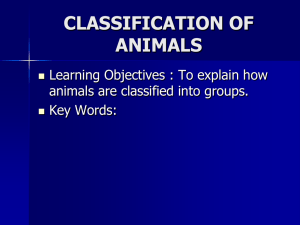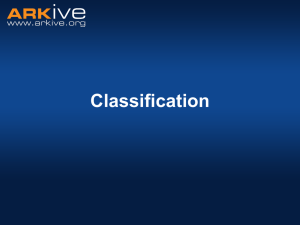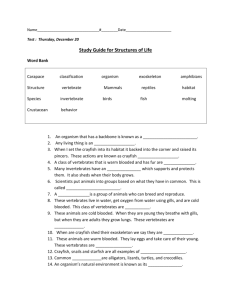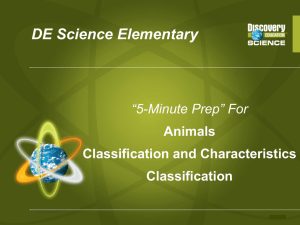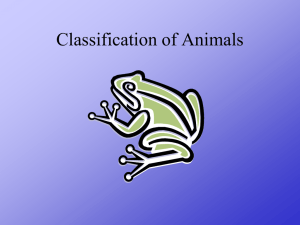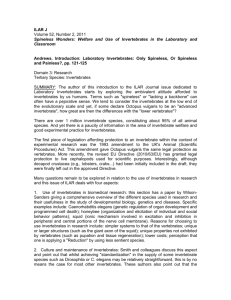vertebrate basics
advertisement
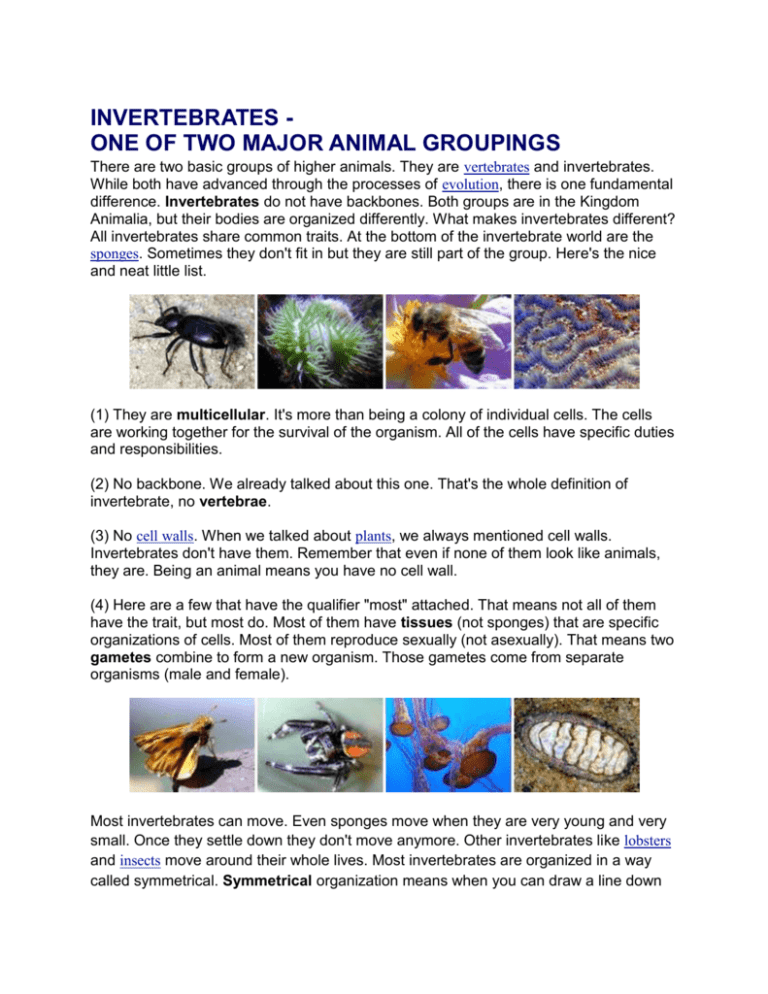
INVERTEBRATES ONE OF TWO MAJOR ANIMAL GROUPINGS There are two basic groups of higher animals. They are vertebrates and invertebrates. While both have advanced through the processes of evolution, there is one fundamental difference. Invertebrates do not have backbones. Both groups are in the Kingdom Animalia, but their bodies are organized differently. What makes invertebrates different? All invertebrates share common traits. At the bottom of the invertebrate world are the sponges. Sometimes they don't fit in but they are still part of the group. Here's the nice and neat little list. (1) They are multicellular. It's more than being a colony of individual cells. The cells are working together for the survival of the organism. All of the cells have specific duties and responsibilities. (2) No backbone. We already talked about this one. That's the whole definition of invertebrate, no vertebrae. (3) No cell walls. When we talked about plants, we always mentioned cell walls. Invertebrates don't have them. Remember that even if none of them look like animals, they are. Being an animal means you have no cell wall. (4) Here are a few that have the qualifier "most" attached. That means not all of them have the trait, but most do. Most of them have tissues (not sponges) that are specific organizations of cells. Most of them reproduce sexually (not asexually). That means two gametes combine to form a new organism. Those gametes come from separate organisms (male and female). Most invertebrates can move. Even sponges move when they are very young and very small. Once they settle down they don't move anymore. Other invertebrates like lobsters and insects move around their whole lives. Most invertebrates are organized in a way called symmetrical. Symmetrical organization means when you can draw a line down the middle of the organism and the two sides look like mirror images. Draw a line down the middle of yourself and one side looks like the other side. If you draw a line down the middle of an octopus you would find two sides with equal parts. Remember we said most? Sponges and some coral are not symmetrical. (5) Invertebrates can't make their own food. Scientists use the word heterotrophic. Heterotrophs feed off other things to get their energy. Plants are autotrophic. They make their own food. Being heterotrophic is one of the main characteristics of being an animal. We eat things, whether it is plants or other animals. That's just the way the world works. VERTEBRATE BASICS Vertebrates are the most advanced organisms on Earth. The traits that make all of the animals in this section special are their spinal cords, vertebrae, and notochords. It's all about having a series of nerves along your back (dorsal side). If you are an organism, you can't just have the nerves sitting there. You need to give those nerves support and protection. That need brings us to the backbones and a rod of cartilage called the notochord. NOT SO MANY SPECIES Fifty thousand species might seem like a lot. Compared to the invertebrates, there are not that many species of vertebrates. You might be asking why. One reason is that vertebrates are usually larger than invertebrates. They need more space. Another reason is that, even though they are more advanced, there are many limitations on the environments that are available to them. Think about it this way. If you are smart mammal, would you rather live near the ocean or in the frozen tundra of the arctic? Many land animals can make that decision and move to more desirable areas for living. Those nicer areas can only support so many species of animals. THEY'VE GOT THE BRAINS Vertebrates are smart. Some of them are very smart. We mean you. Most vertebrates have very advanced nervous systems. While a goldfish might not compare to your intelligence, when you compare a goldfish to a sea anemone, a goldfish is like Einstein. Octopi are probably the smartest invertebrates and may equal or be smarter than some vertebrates. Octopi are the exception in the invertebrate category. More cool traits about vertebrates are that they have muscles and skeletons. While the materials may vary, muscles allow vertebrates to move around very efficiently and perform complex moves. That ability to move and the intelligence to go with it gives vertebrates such as reptiles and birds an advantage in the natural world.
